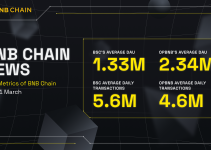After seeing all the recent price movements for Bitcoin, you might be asking yourself, “Should I buy Bitcoin?” Let’s take a closer look at the history of Bitcoin’s price, and what recent trends might tell us about its future.

Over the past three months, discussions about the price of Bitcoin have gone through three phases:
- Post-Bitcoin halving anticipation, pointing out to previous bull markets that followed each halving. (Notice the high volume during May, before the May 22 Bitcoin halving event.)
- A long period of sideways action, with BTC mostly in the $9,000 range and some jokes about Bitcoin acting like a stablecoin.
- The spike in BTC prices during the past week, characterized by a four-day jump to $11,000.

Source: CoinMarketCap
The market sentiment of the past three months may serve as a microcosm of the Bitcoin market in general. Bitcoin has come a long way from its creation in 2009, its less-than-a-cent valuation in 2010, and that fateful 10,000 BTC purchase of two pizzas in the same year.
Now, Bitcoin is a $200 billion market with an $11,000 valuation per bitcoin as of press time. At its height in December 2017, Bitcoin had a $20,000 price and a $300 billion market capitalization.
How did Bitcoin grow so fast in the span of just one decade? Market cycles, adversities, and recoveries play a role in this story.
Bitcoin halving and so-called market cycles
One popular assumption about Bitcoin is that it has a nearly-four-year market cycle, bookended by Bitcoin halving events.
In many major exchanges that existed in 2012, the price of BTC around the first Bitcoin halving, in November 2012, was $13. The price rose to around $220 six months after that. BTC was priced as high as $1,100, just a year after the first halving.
By the time the second halving happened in July 2016, 1 BTC was worth $660. It then took six months for the price to cross $1,000, then four months to reach $2,000, another four months to reach $4,000, and just three months to reach its all-time high of around $20,000 in December 2017.

Source: CoinMarketCap

During the third halving event in May 2020, Bitcoin’s price was about $9,000. The meteoric rises in Bitcoin price over the past two almost-four-year periods have made people excited about the future of Bitcoin. While many predictions on Bitcoin price for the end of 2020 abound, they are mostly optimistic based on these perceived patterns.
This is where due caution is advised. Some analysts have sought to disprove the perceived patterns above, while we have more than 380 predictions of Bitcoin’s eventual death. These predictions come out more often during market downturns, which we’ll go to next.
The higher the rise, the steeper the fall
Remember the first chart we showed about Bitcoin’s price movements since the third halving event? It seems like years ago, but Bitcoin’s price in 2020 has had a more compelling story. Let’s expand that chart a bit.

Source: CoinMarketCap
We began 2020 with a Bitcoin price of $7,000. Bitcoin fluctuated between $8,000 and $10,000 earlier this year, before a 24-hour crash in mid-March, amid the tumble of global markets due to the COVID-19 pandemic, sent the price down from $8,000 to $4,500. (This happened one month after the big stock market crash in mid-February 2020, surprising people who thought that BTC may end up as a hedge against stocks.)
People new to Bitcoin can get unnerved about tumbles like this, but those who have been around for a while know that there’s always at least one notable tumble for each market cycle.
- After a high of $1,100 in December 2013, the price of Bitcoin trended down to as low as $200 just 12 months after, and stayed at that level for nine months.
- After the all-time-high of almost $20,000 in December 2017, Bitcoin’s price plummeted as low as $7,000 amid wild fluctuations during the first half of 2018. Bitcoin’s price exactly one year after ATH: around $3,000.
But more than the highs and lows of Bitcoin’s price, what people should remember about Bitcoin’s price history are the times that it recovered after every fall, no matter what naysayers say.
Bitcoin is resilient
While it’s the extremes that grab more attention, one can argue that it’s in the more stable moments where the opportunity is the biggest. Here’s how Bitcoin eventually recovered every time there’s a down moment in price action.
- After a price floor of $200 that lasted until October 2015, Bitcoin eventually recovered to $400 in December 2015, and worked its way to $750 over the next six months, in advance of the next Bitcoin halving in July 2016.
- Bitcoin clawed its way out of the harsh bear market at the start of 2019. Following the $3,000 low in December 2018, the price recovered to $5,000 by early April, then climbed to as high as almost $12,000 by the end of June. While it is not yet a full recovery from the ATH, the evolution of the BTC markets bode well for BTC’s trajectory in the long term.
- In the recent pandemic-induced swoon, it only took Bitcoin just two months to go from $4,500 in mid-March to almost $10,000 in mid-May, ahead of the recent Bitcoin halving event in that month.
At each downturn, the number of Bitcoin-to-zero predictions grew. At each recovery, the number of naysayers being silenced grew as well.
Takeaways and the bigger picture
This narrative of Bitcoin’s price is in no way definitive, and several factors play into how markets act day after day. But there are a few insights we can draw from this story:
- Both upswings and downswings are fast, so it might not be the best idea to mainly ride on those.
- Bitcoin’s rise can be fast and bewildering at times. But it can also rise at a gradual pace that allows for cooler heads to prevail.
- There’s no guarantee that the market cycle will repeat, but that doesn’t stop us from drawing lessons from each milestone in Bitcoin’s trading history.
Ultimately, when it comes to buying bitcoin, the question of “when” matters less than the “why,” especially considering the long-term trends we discussed above and, more importantly, the ever-growing user base of cryptocurrencies worldwide. All the short-term price movements are but pixels in the grander picture of the rise of Bitcoin and cryptocurrency as a viable system for exchanging value around the world.

Disclaimer: Bitcoin trading is subject to significant market risk, so please trade cautiously. No statement in this article should be misconstrued as investment advice, and everyone is encouraged to do your own research before entering into trades.


